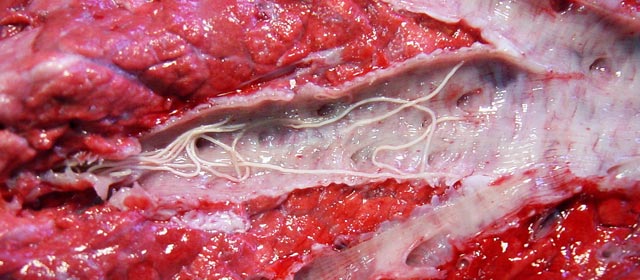Story summary
Because New Zealand is isolated and has strict laws controlling animal imports, it does not have many of the serious animal diseases found elsewhere. The biggest potential threat to the industry is foot-and-mouth disease – if there was an outbreak of this contagious virus, exports of all meat would stop.
Sheep diseases
In the early days of farming, sheep were grazed on open pastures and were generally healthy. But as greater numbers of sheep were kept in smaller areas, it became harder to keep them healthy. Worms, scab (caused by a mite living in the skin) and the deadly anthrax were problems.
Some major diseases of sheep today are:
- footrot – a bacterial infection that destroys hooves and leads to death
- internal parasites – nematode parasites in the digestive system cause poor growth, diarrhoea and death
- fly strike – where flies lay eggs in dirty wool, and the maggots that hatch eat the sheep’s flesh.
Cattle diseases
The most serious illness is bovine tuberculosis (TB). Controlling it is important for the industry as well as the health of farmers, who can be infected. It is compulsory for herds to be tested for TB, but it is difficult to control because wild possums and ferrets carry and spread it.
Other diseases of cattle include:
- bovine viral diarrhoea – one of the most common cattle diseases, if a pregnant cow becomes infected it can harm her unborn and young calves
- Johne’s disease – a bacterial infection of the intestines, leading to wasting and death
- internal parasites – these worms live in the cow’s fourth stomach and intestines, and can affect its growth
- poisoning – leaves of the yew tree, acorns, and tutu are among the plants poisonous to cows.
Deer diseases
Deer are prone to getting sick when they are stressed or do not have enough food.
Diseases include:
- malignant catarrhal fever – caused by a virus, which strikes most often in winter, especially male deer
- external parasites – including ticks and lice, which suck blood and can be especially harmful to newborn deer
- tuberculosis – which can infect both deer and humans.
Nutritional problems
Sheep, cattle and deer can suffer from nutrient deficiencies. To avoid this, pasture and other foods need to be grown in soils which have the right amounts of essential elements.





